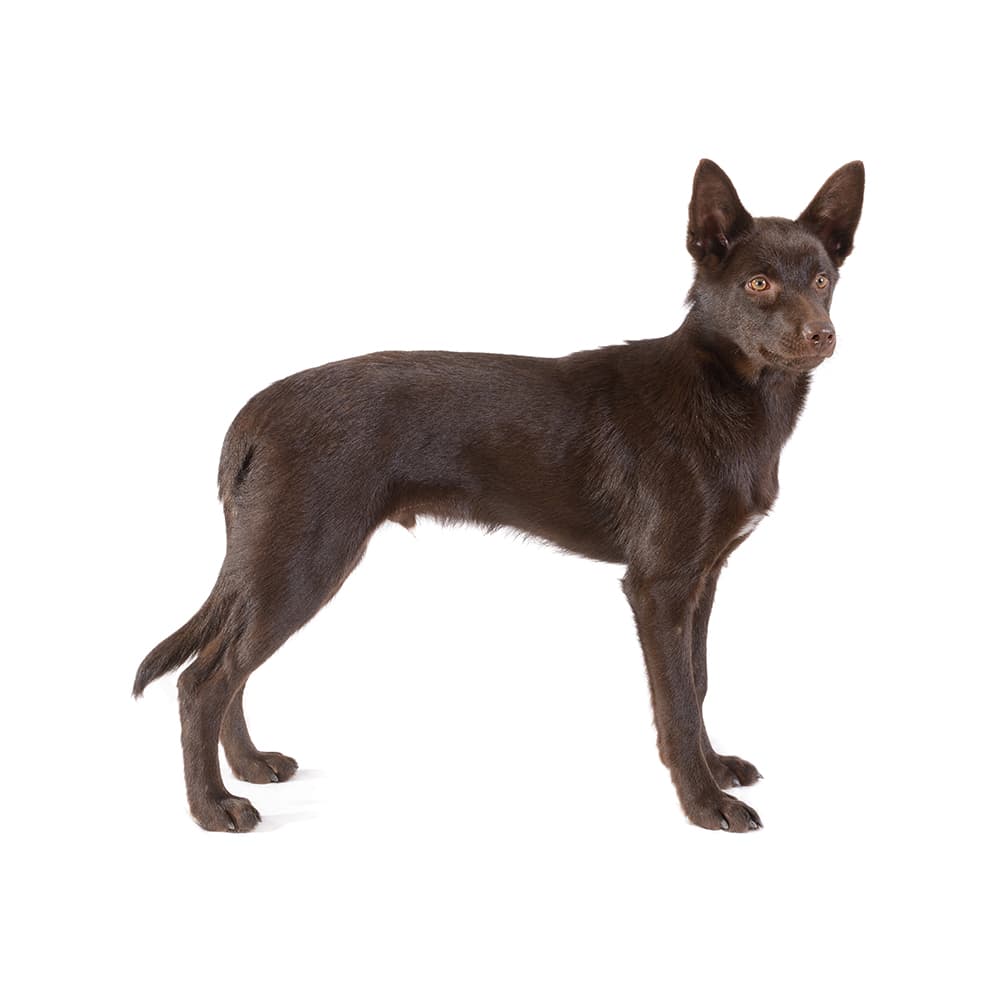Discover your dog's connection to this breed and 200+ others


Discover your dog's connection to this breed and 200+ others



The Australian Kelpie's history traces back to the late 19th century, with the breed's name reportedly derived from a mythological being from Celtic folklore known as the Kelpie, a water spirit often appearing in the form of a horse. It's believed that the Australian Kelpie was developed through crossbreeding imported dogs from Scotland, predominantly Collies, with native Australian Dingoes. The Australian Kelpie was developed to help herd large amounts of sheep in Australia. Selective breeding ensured its ability to work in heat, dust storms, and to manage rough terrain and cover vast distances (often up to 30 miles in one day).
Australian Kelpie Dogs can suffer from eye conditions, including chronic superficial keratitis (or pannus), progressive retinal atrophy, and Collie eye anomaly. They may also be prone to cerebellar abiotrophy, cutaneous asthenia, globoid cell leukodystrophy, hernia (perineal), hypothyroidism, neuronal ceroid lipofuscinosis 12, intestinal lipid malabsorption. Like many breeds, they are susceptible to hip dysplasia and degenerative myelopathy.
Australian Kelpies are highly energetic, intelligent, and eager to work. They thrive when they have a job to do, and their herding instinct is deeply ingrained. As pets, they require regular physical and mental stimulation to prevent them from becoming bored and potentially destructive. They are loyal to their families, and while they can be reserved with strangers, they are not typically aggressive. Training should start from an early age and should be consistent to ensure that the Kelpie grows into a well-behaved adult.
Australian Kelpies are not recommended for apartment living or for those who can't provide them with enough exercise and mental stimulation. They are perfect for active individuals or families, and they excel in various dog sports, such as agility, obedience, and, of course, herding trials.
A canine genetic lineage is a group of individuals or entire breeds that descended from common ancestors predating modern breed formation. Often these lineages are associated with a ‘type’ of dog with a unique historical working role and associated behaviors (e.g., herding, scent hunting, etc.).
Herding dogs are known for their high intelligence, trainability, and strong work ethic. These breeds originated in areas where managing livestock was an important part of daily life and had large pastoral lands. These breeds were specifically developed to help farmers and shepherds move, manage, and protect herds of livestock. Breeds within the herding dog lineage are agile and are known to have a natural herding instinct, where they like to keep their animals together. They are loyal and attentive to their handlers and are eager to please and are also highly aware of their environment. Many breeds within this linage have gone on to work as rescue and police dogs.
Example breeds with ancestry from this lineage include Border Collie, Cardigan Welsh Corgi, and German Shepherd.
According to the AKC, an all-black Kelpie is also known as a Barb, and the word "kelpie" is Gaelic for "water sprite".
The AKC also shares that a Kelpie named Abbie Girl won the World Dog Surfing Championship in California in 2017.
DOI: 10.1002/9781119540687
https://www.ukcdogs.com/australian-kelpie
https://www.akc.org/dog-breeds/australian-kelpie/
https://www.ncbi.nlm.nih.gov/pmc/articles/PMC3524815/
https://onlinelibrary.wiley.com/doi/full/10.1111/j.1365-2052.2011.02199.x
https://www.nature.com/articles/s41598-020-75243-x
Recommended by top vets with decades of experience
21 breeds
64 genetic health markers
50 genetic trait markers
